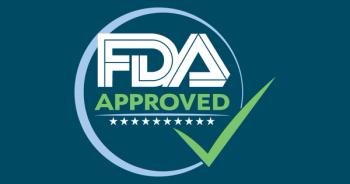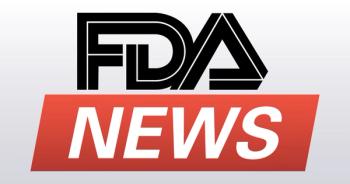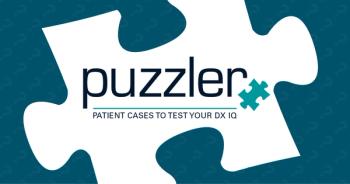
FDA approves ruxolitinib for pediatric patients with atopic dermatitis aged 2 to 11 years
The FDA has approved an additional indication for Incyte's ruxolitinib cream to include pediatric patients.
On September 18, 2025, the FDA approved an expanded indication of Incyte's ruxolitinib (Opzelura) to treat atopic dermatitis in patients aged 2 to 11 years, according to a press release from Incyte. Previously, the topical nonsteroidal treatment was indicated for patients 12 years or older.1,2
“Navigating a complex condition like atopic dermatitis can be very challenging for children, who currently have limited treatment options to meet their specific needs,” said Peter Lio, MD, clinical assistant professor of dermatology and pediatrics at Northwestern University Feinberg School of Medicine. “With this approval, we now have a new, nonsteroidal topical option that expands how we care for kids with this chronic disease. This is a meaningful step forward and marks a significant advancement in our ability to better support our pediatric patients.”1
"I think it is very exciting to have another nonsteroidal approved for kids with atopic dermatitis. [Ruxolitinib] has been approved in kids aged 12 years and older for vitiligo for some time now, so I do think that it is good to have multiple products approved that allow multiple options in treating atopic dermatitis," John Browning, MD,
WATCH:
"It's just so great to finally be able to get a 2A nonsteroidal medicine as first line, which is what I think it should be," he said. "I don't think we should have to make patients try a topical steroid first and [potentially] have a rebound issue.... It is just good to finally be able to start with these."
Ruxolitinib data: Phase 3 TRuE-AD3 trial
Ruxolitinib's expanded approval was based on data from the phase 3 TRuE-AD3 study (NCT04921969), a randomized, double-blind, vehicle-controlled trial that evaluated safety and efficacy of the topical vs vehicle in children with atopic dermatitis aged 2 to 11 years. The trial featured more than 300 patients who had an atopic dermatitis diagnosis for at least 3 months.2
The trial met its primary end point, the proportion of participants achieving Investigator Global Assessment treatment success (IGA-TS), defined as an IGA score of 0 (clear) or 1 (almost clear) with at least a 2-point improvement from baseline at week 8.
Data announced in 2023 revealed that 56.5% of patients treated with ruxolitinib cream 1.5% and 36.6% of patients treated with ruxolitinib cream 0.75% achieved IGA-TS at week 8 (P ≤ .0001 for both) compared with 10.8% of patients treated with vehicle.3
Additionally, 67.2% of patients treated with ruxolitinib cream 1.5% and 51.5% of patients treated with ruxolitinib 0.75%, respectively, achieved Eczema Area and Severity Index of 75% or greater improvement success compared with those treated with vehicle at week 8 (15.4%; P < .0001 for both). Among patients aged 6 to 11 years, the itch numerical rating scale 4 (NRS4; ≥ 4-point improvement in itch [NRS] score) was achieved by 43.4% of participants in the 1.5% treatment arm and 37.5% of patients in the 0.75% treatment arm at week 8 compared with those treated with vehicle (29.7%). Median time to NRS4 was 13.0/11.0 days (1.5% and 0.75%, respectively) compared with 23.0 days for vehicle (HR, 1.74 and 1.77; P < .05 for both), according to Incyte.
The JAK inhibitor was first approved by the FDA on September 21, 2021, for the short-term and noncontinuous chronic treatment of mild to moderate atopic dermatitis in nonimmunocompromised patients 12 years or older.4
“While every child’s journey with AD [atopic dermatitis] is unique, for many, the skin redness and irritation can profoundly impact their well-being,” added Korey Capozza, founder of Global Parents for Eczema Research. “When you’re managing a condition that can affect daily life, access to safe, effective, and age-appropriate options is critical. With limited, safe treatment options currently available, especially for younger children, the addition of new therapies that control symptoms is so important to meet the needs and goals for children with AD and their families.”1
References
1. Incyte announces additional FDA approval of Opzelura (ruxolitinib) cream in children ages 2-11 with atopic dermatitis. Press release. Incyte. September 18, 2025. Accessed September 18, 2025. https://investor.incyte.com/news-releases/news-release-details/incyte-announces-additional-fda-approval-opzelurar-ruxolitinib
2. Incyte announces positive topline results from phase 3 trial evaluating ruxolitinib cream (Opzelura) in children with atopic dermatitis. Press release. Incyte. July 11, 2023. https://investor.incyte.com/news-releases/news-release-details/incyte-announces-positive-topline-results-phase-3-trial
3. Incyte announces new data for ruxolitinib cream (Opzelura) in children with atopic dermatitis. Press release. Incyte. October 13, 2023. https://investor.incyte.com/news-releases/news-release-details/incyte-announces-new-data-ruxolitinib-cream-opzelurar-children
4. Incyte announces U.S. FDA approval of Opzelura (ruxolitinib) cream, a topical JAK inhibitor, for the treatment of atopic dermatitis (AD). Press release. Incyte. September 21, 2021. https://www.businesswire.com/news/home/20210921006072/en/Incyte-Announces-U.S.-FDA-Approval-of-Opzelura-ruxolitinib-Cream-a-Topical-JAK-Inhibitor-for-the-Treatment-of-Atopic-Dermatitis-AD
Newsletter
Access practical, evidence-based guidance to support better care for our youngest patients. Join our email list for the latest clinical updates.









